登陆有奖并可浏览互动!
您需要 登录 才可以下载或查看,没有账号?立即注册


×
微流控技术专题(五):模拟仿真在微流控芯片设计过程中的作用
点击上方原文链接,关注我们
原创:逸芯生命科学
微流控芯片特点及优势
01微流控芯片特点及优势
微流控芯片(Microfluidic Chip)是一种通过微型通道和结构来操控微小流体(通常为微升或纳升级别)的技术平台,也被称为“芯片实验室”(Lab-on-a-Chip),其具有以下核心特点:
微型化
集成传统实验室功能(混合、分离、反应等)于厘米级芯片上。通道尺寸通常为数十到数百微米。
精确控制
通过微泵、阀门或电渗流等手段精准控制流体行为。
高通量
可并行处理多个样本或反应,常用于高通量筛选。
因此,具有:高效低耗:节省试剂和样本(尤其珍贵生物样本)、快速响应:小尺度缩短扩散路径,加速反应、便携性:适合现场检测(如床边诊断、野外分析)的优势。
基于微流控芯片的特点及优势,当前该技术被广泛应用于: 生物医学领域研究:疾病诊断-便携式核酸检测(如COVID-19)、单细胞分析;器官芯片-模拟人体器官功能,用于药物测试;药物缓控释-高通量载药水凝胶微球制备、化学合成领域研究:高效合成纳米材料或药物,减少副反应、环境监测:实时检测水质污染物或空气微粒。
模拟仿真的必要性
然而,在微流控芯片设计过程中细微的精密结构变化往往会对目标结果产生极大影。因此,模拟仿真在微流控芯片设计中扮演着至关重要的角色,尤其在优化设计、预测性能、降低成本以及缩短研发周期方面具有不可替代的作用。其必要性体现在:
降低实验成本
微流控芯片制造依赖光刻、3D打印等精密工艺,单次试错成本高昂。仿真可在虚拟环境中测试多种设计方案,减少物理原型迭代次数。
加速研发周期
通过参数化扫描快速筛选最优设计(如通道宽度、深度、角度),传统实验需数周的任务可缩短至数小时。
揭示微观机理
实验难以观测微米尺度下的瞬态现象(如涡流形成、浓度梯度演变),仿真提供高时空分辨率的可视化数据。
支持复杂系统集成
微流控芯片常集成传感、驱动和检测功能,仿真可评估多组件协同工作的兼容性(如电信号与流场的相互干扰)。
指导实验设计
仿真结果可为实验提供关键参数范围(如流速阈值、电场强度),避免盲目尝试。
模拟仿真在微流控芯片设计中的具体应用
01流体动力学行为预测
用途:分析微通道内的层流、湍流、扩散、剪切力等流动特性。
案例:使用COMSOL或ANSYS模拟微流控芯片中的流体阻力分布,优化通道几何形状(如宽度、曲率),避免因设计缺陷导致的流量不均或堵塞。
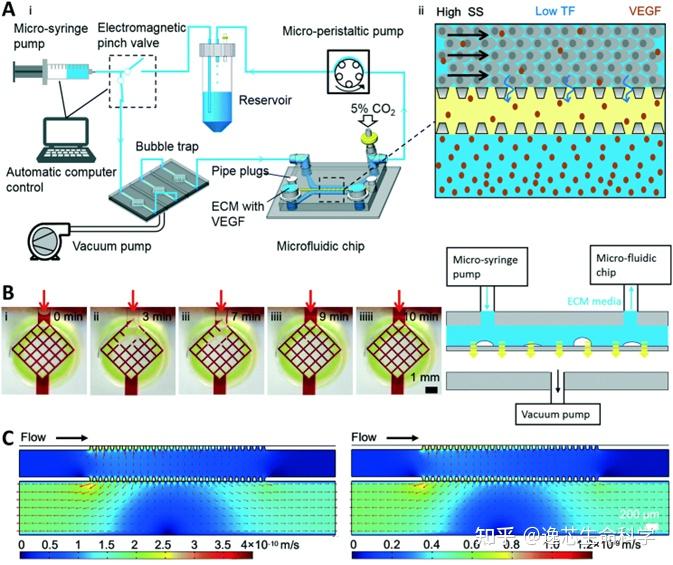
图1. 流体动力学预测[1]
02混合效率优化
用途:评估被动混合结构(如蛇形通道、障碍物)或主动混合(如声波、电场驱动)的混合效果。
案例:通过CFD仿真对比不同混合结构的浓度梯度分布,选择最优设计(如混沌混合器)以提高生化反应速率。
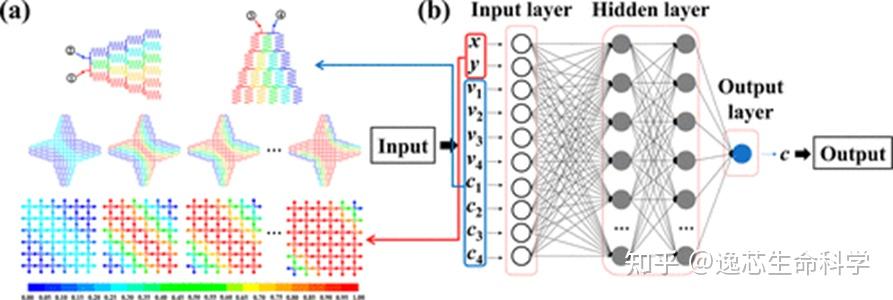
图2. 混合效率优化[2]
03芯片结构应力分析
用途:评估芯片材料(如PDMS、玻璃)在加工或使用中的变形或破裂风险。
案例:仿真热压成型工艺中PDMS层的应力分布,避免微通道因热膨胀系数不匹配而变形。
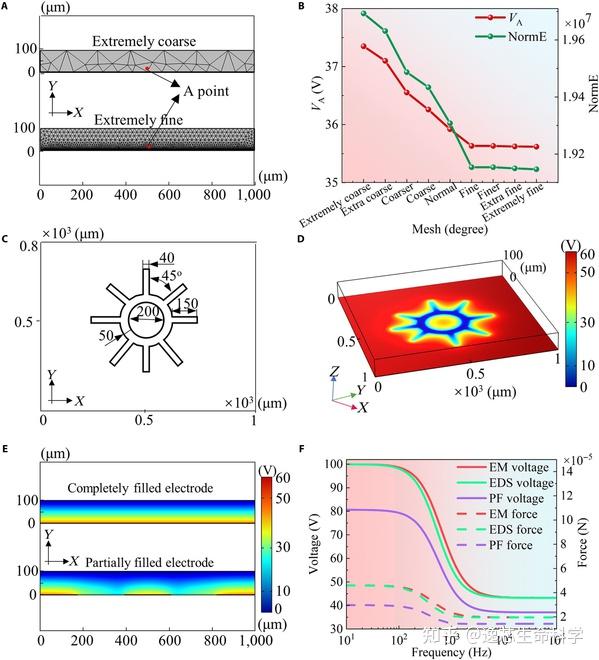
图3. 结构应力分析[3]
04细胞/粒子操控验证
用途:预测惯性聚焦、声波分选或磁控技术对细胞/颗粒的操控精度。
案例:模拟惯性微流控芯片中不同尺寸细胞的聚焦轨迹,优化通道长度和流速以提升分选效率。
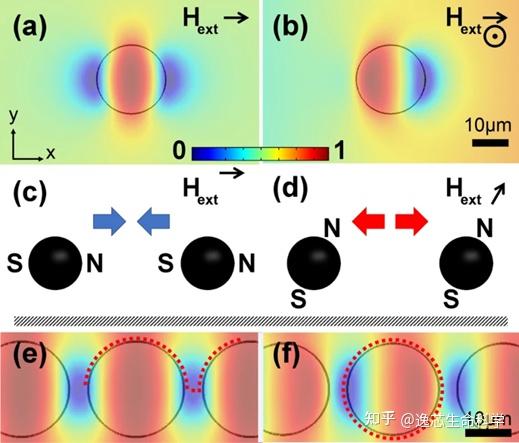
图4. 细胞操控[4]
05反应动力学建模
用途:预测微反应器中化学/生物反应的时空分布,如PCR扩增效率或酶动力学过程。
案例:通过仿真温度梯度对PCR芯片中DNA扩增效率的影响,优化加热区域布局。
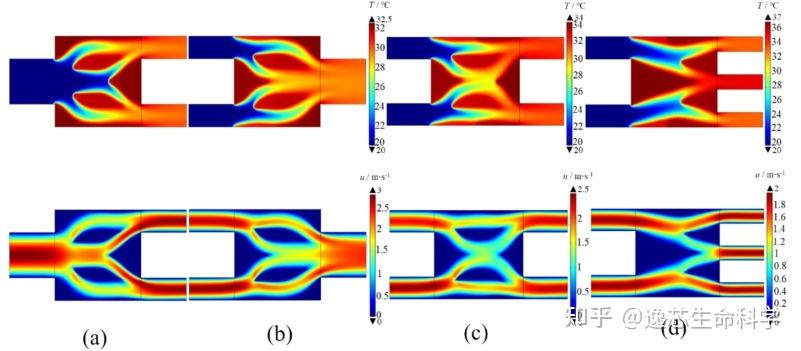
图5. 传热传质优化[5]
06多物理场耦合分析
用途:研究电渗流(EOF)、介电泳(DEP)、热效应等多场耦合下的复杂现象。
案例:设计数字微流控芯片时,仿真电场分布对液滴位移的影响,确定电极排布和驱动电压参数。
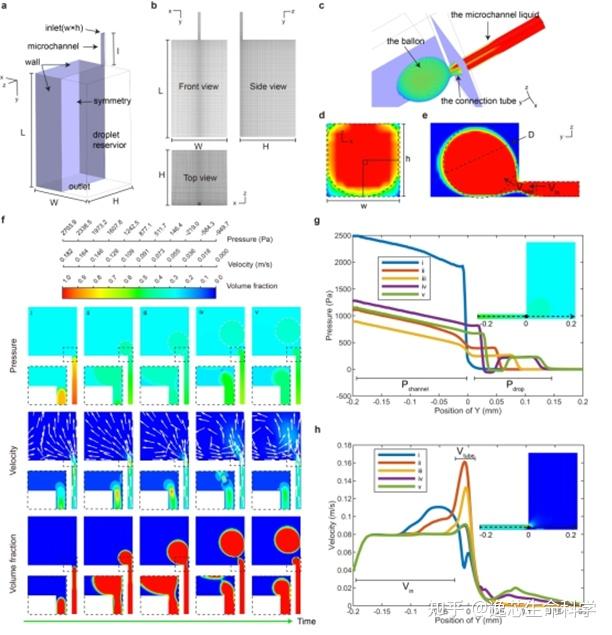
图6. 多物理场耦合分析[6]
总结
模拟仿真不仅是微流控芯片设计的“虚拟实验室”,更是推动其从原型到量产的核心技术支撑。通过精准建模和多维度分析,能够显著提升设计效率,降低风险,并为复杂功能集成提供理论依据。
原文文献:
1. Zhao P, Liu X, Zhang X, et al. Flow shear stress controls the initiation of neovascularization via heparan sulfate proteoglycans within a biomimetic microfluidic model[J]. Lab on a Chip, 2021, 21(2): 421-434.
2. Qi X, Zhou Q, Li X, et al. Generation of Multiple Concentration Gradients Using a Two-Dimensional Pyramid Array[J]. Analytical Chemistry, 2023, 96(2): 856-865.
3. Zhao Y, Zheng Z, Liu J, et al. Structural Optimization of Microfluidic Chips for Enhancing Droplet Manipulation and Observation via Electrodynamics Simulation[J]. Cyborg and Bionic Systems, 2025, 6: 0217.
4. Abedini-Nassab R, Shourabi R. High-throughput precise particle transport at single-particle resolution in a three-dimensional magnetic field for highly sensitive bio-detection[J]. Scientific Reports, 2022, 12(1): 6380.
5. Wang X, Cai X, Wan C, et al. Data‐Driven Theoretical Modeling of Centrifugal Step Emulsification and Its Application in Comprehensive Multiscale Analysis[J]. Advanced Science, 2025: 2411459.
6. Huang J, Li W, Chen B, et al. Pseudo three-dimensional topology optimization of chip heat sinks with various inlet–outlet arrangements[J]. International Journal of Heat and Fluid Flow, 2025, 111: 109670.
欢迎联系留言
解锁更多微流控芯片详情
产品试用福利多多~

原文地址:https://zhuanlan.zhihu.com/p/1893235021948642845 |
 /3
/3 